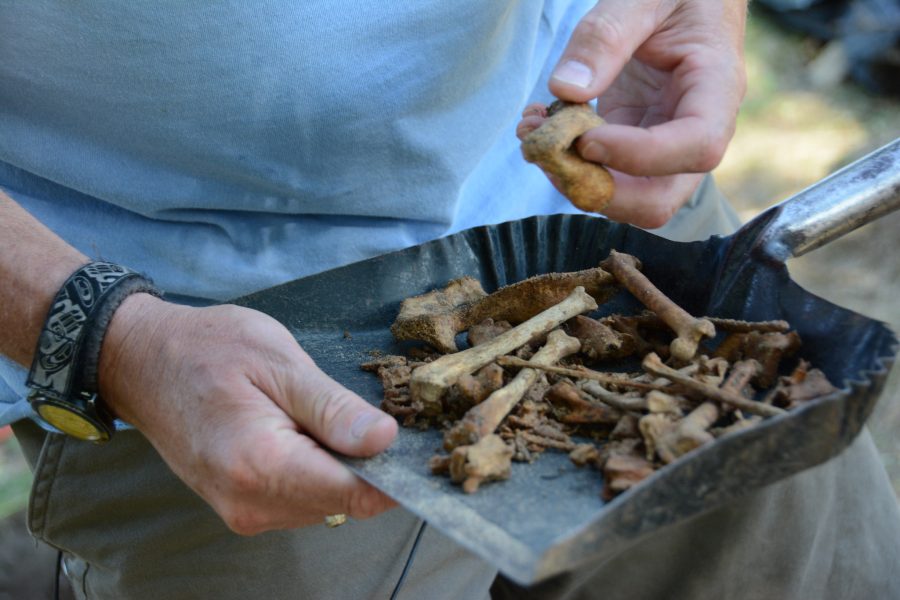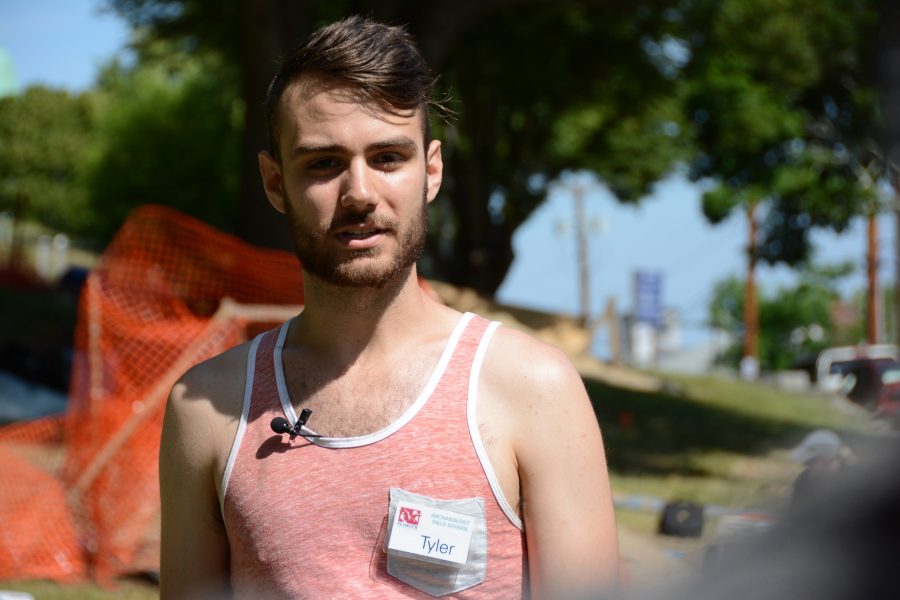From May 27th to June 27th, the students and professors of the University of Massachusetts Boston’s Archaeological Field School excavated the side of a hill in Plymouth, MA, looking for the border of the original pilgrim settlement, whose whereabouts continue to be a longstanding mystery.
Despite not finding the borders of the original settlement, the group now has a better understanding of the history and activity that occurred on that particular plot of land. Additionally, the graduate and undergraduate students involved gained hands-on experience in archaeological field work.
The Field School’s search was highlighted in several news outlets, including the Boston Globe, Washington Post, and the Smithsonian.
Burial Hill rises in the center of Plymouth, it’s slope covered with gravestones, large shade-giving trees, and coarse yellow grass. This vantage point is the reason the original pilgrims built their fort there, as its palisades encircle and stretch down to the harbor.
The fort has since become a graveyard, and the palisades have been taken down and built over. This makes the small patch of land at the bottom of Burial Hill one of the only places where their remnants might be found.
Field School director David Landon, in a video made by UMass Boston’s Office of Communications, said, ”We realized very quickly that we needed to have a big sign so that people driving by knew what we were up to.”
Landon implies that onlookers might have wondered if they were witnessing grave robbing. Ground-penetrating radar was used before digging, to ensure that no graves would be disturbed.
Landon, Associate Director of the Andrew Fiske Memorial Center for Archaeological Research and a Professor of Archaeology at UMass Boston, reports that the field school unearthed horse bridles, oysters, doorknobs, and schoolhouse bricks.
These artifacts consistently appear to be from the 19th century. A graduate student will write up a description of the items for their Master’s thesis, and the collection will be curated at Plymouth Plantation.
Tyler Kyrola, Field School participant, said in the Office of Communications video, “It’s a challenge, and a lot of fun finding the bottom of these holes, and we’ve found a lot of cool artifacts along the way,” mentioning finding “buttons with fabric still attached to them.”
Kyrola said that this layer of soil at the bottom of the hole was the most important discovery, and gave them an idea of “how to refine our research area if [they] are searching for older material, such as the [Pilgrim] fortifications.”
Kyrola, 23, is from Independence, MI and attended St. Olaf College in Northfield, MN. He graduated with a joint major in Anthropology and Sociology, as well as a second major in Religion, and a minor in Gender Studies.
Kyrola worked in Excavation Group #9, a sub-group of the Field School, alongside UMass Boston historical archaeology graduate student Eric Johnson, and undergraduate senior Xinli Huang, as well as volunteers from the Plymouth community.
Kyrola described the area of the excavation site as previously having a lot of historic buildings on it – “a lot of stables, warehouses, and houses.” Group number nine looked at how the land had changed after the construction and demolition of those buildings.
When asked if this was the first archaeological project he had been involved in, Kyrola replied that it wasn’t, but that; “every dig is different, every dig is exciting.”
The Archaeological Field School is provided through the college of Advancing and Professional Studies and is designed to give students experience in “field recording, mapping, excavation, sample collection, and basic artifact analysis,” according to the program’s website.
“The students are in the classroom, then, they actively engage in this serious research project,” titled ‘Project 400,'” Landon said. This dig leads up to the historic 400th anniversary of the Plymoth Plantation.
Landon plans to return with students to Plymouth every summer until at least 2021 to continue searching for the foundations of the palisades.
UMass Boston Archaeological Field School conducts research in Plymouth
September 6, 2014
Tyler Kyrola from the Archeology Field School






















































